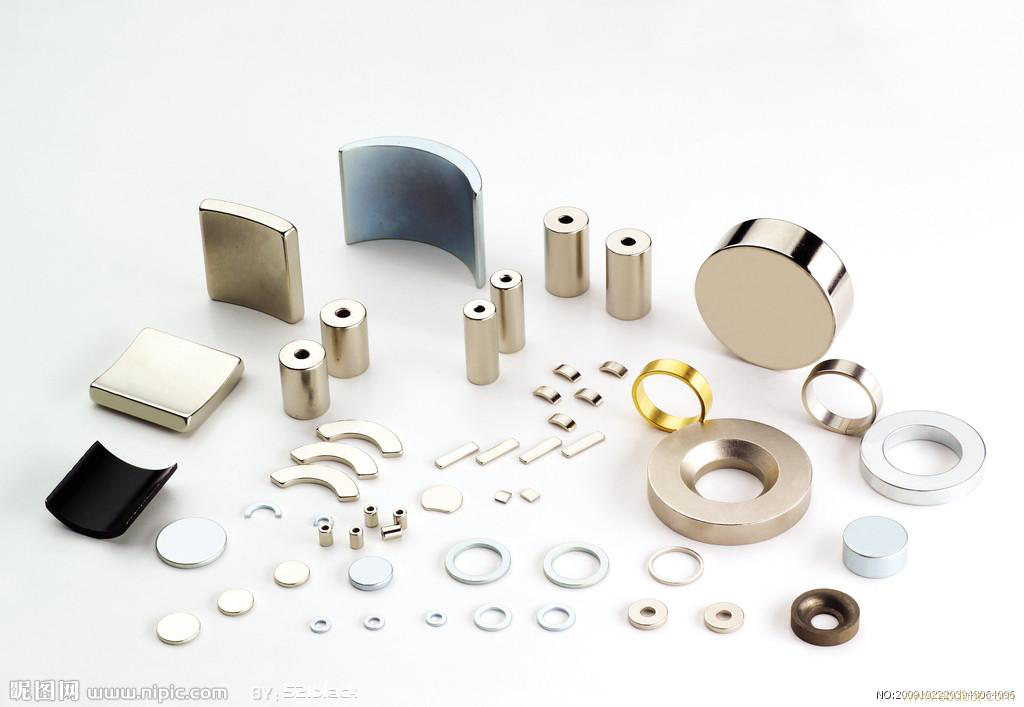 The corrosion resistance of sintered neodymium iron boron permanent magnets is not only related to the corrosion resistance of the substrate, but also related to the type of coating on the magnet surface, the thickness of the coating and the coating process. Within the typical test time range, the coating is not allowed to have visible blistering, peeling, rusting, chalking and other defects. The coating is allowed to have slight discoloration, blackening and darkening, and some white corrosion products are allowed on the zinc layer. The corrosion resistance of sintered neodymium iron boron permanent magnets is not only related to the corrosion resistance of the substrate, but also related to the type of coating on the magnet surface, the thickness of the coating and the coating process. Within the typical test time range, the coating is not allowed to have visible blistering, peeling, rusting, chalking and other defects. The coating is allowed to have slight discoloration, blackening and darkening, and some white corrosion products are allowed on the zinc layer.
Neutral Salt Spray Test (NSS)
Salt spray corrosion is a common and most destructive atmospheric corrosion. The salt spray mentioned here refers to the atmosphere containing chloride (mainly sodium chloride), which mainly comes from the ocean and inland saline-alkali areas. Chloride ions penetrate the oxide layer and protective layer on the metal surface and electrochemically react with the internal metal to cause metal corrosion. At the same time, chloride ions contain a certain amount of hydration energy, and are easily absorbed by the pores and cracks on the metal surface to displace and replace the oxide layer. Oxygen turns insoluble oxides into soluble chlorides, and turns the passive surface into an active surface, causing extremely bad reactions to the product.
Salt spray test is an environmental test that mainly uses artificially simulated salt spray environmental conditions created by salt spray test equipment to assess the corrosion resistance of products or metal materials. It is divided into two types: neutral salt spray and acid salt spray. The difference is the standards that are met are different from the test methods, also known as “NSS” and “CASS” tests. Sintered NdFeB is subjected to neutral salt spray test. According to the national standard, continuous spray test method is adopted. The test conditions are: 35℃±2℃, 5%±1% NaCl solution (mass fraction), pH of the collected salt spray sedimentation solution Between 6.5 and 7.2, the sample placement angle has an impact on the test results. The inclination angle of the sample surface placed in the salt spray box is 45°±5°.
One hour of salt spray test time is equivalent to how long does it take on-site? According to the information:
Neutral salt spray test 24h ⇌ natural environment 1 year
Acetate spray test 24h ⇌ natural environment 3 years
Copper salt accelerated acetate spray test 24h ⇌ 8 years in natural environment
Damp heat test: The sintered NdFeB damp heat test is an accelerated method to evaluate the damp and heat resistance of samples. The samples are subjected to high unsaturated damp heat steam pressure for a long time. The test conditions are: temperature 85℃±2℃, relative humidity 85%±5%, and humidification water is distilled water or deionized water. The severity level is 1, which is 168 hours.
High pressure accelerated aging test (PCT)
The high-pressure accelerated aging test is generally called the pressure cooker test or the saturated steam test. It is mainly to test the high humidity resistance of the sample under severe temperature, saturated humidity and pressure environment.The high-pressure accelerated aging test of sintered NdFeB is to put the sample into a high-pressure accelerated aging test equipment containing distilled water or deionized water with a resistivity greater than 1.0MΩ·cm. Unsaturation mode test conditions are: temperature 120℃±2℃, air pressure 0.2MPa, relative humidity controlled in the range of 100_05%; for more stringent saturation mode test conditions: temperature 120℃±2℃, air pressure 0.2MPa, The relative humidity is 100%. |
 The corrosion resistance of sintered neodymium iron boron permanent magnets is not only related to the corrosion resistance of the substrate, but also related to the type of coating on the magnet surface, the thickness of the coating and the coating process. Within the typical test time range, the coating is not allowed to have visible blistering, peeling, rusting, chalking and other defects. The coating is allowed to have slight discoloration, blackening and darkening, and some white corrosion products are allowed on the zinc layer.
The corrosion resistance of sintered neodymium iron boron permanent magnets is not only related to the corrosion resistance of the substrate, but also related to the type of coating on the magnet surface, the thickness of the coating and the coating process. Within the typical test time range, the coating is not allowed to have visible blistering, peeling, rusting, chalking and other defects. The coating is allowed to have slight discoloration, blackening and darkening, and some white corrosion products are allowed on the zinc layer.

 English
English